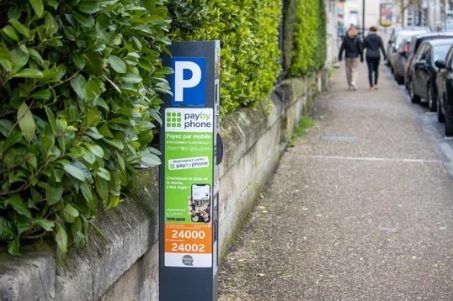The convenience of digital payments has ushered in a new era of speed and efficiency, but it has also opened the door to cybercrime. The latest manifestation of this trend is the insidious practice of “quishing,” a term coined to describe the use of fraudulent QR codes to deceive unsuspecting motorists into divulging sensitive financial information.
Drivers are being warned to exercise caution when using QR codes to pay for parking, as a surge in “quishing” scams is sweeping the nation. This deceptive tactic involves placing fake QR codes on legitimate parking signs, redirecting unsuspecting motorists to fraudulent websites designed to steal personal and financial information.
The RAC has issued a stark warning, advising drivers to prioritize cash, card, or official app payments over QR codes. “We urge drivers to be very vigilant,” said Simon Williams, RAC head of policy. “Unfortunately, the increasing popularity and ease of using QR codes appears to have made drivers more vulnerable to malicious scammers.”
The consequences of falling victim to a quishing scam are severe. Not only do drivers risk financial loss, but they may also face additional penalties for unpaid parking. “As if this quishing scam isn’t nasty enough, it can also lead to drivers being caught out twice,” Williams added.
Cases of quishing have been reported in multiple regions across the UK, including Barking and Dagenham, Northumberland, and Pembrokeshire. However, most councils emphasize that they do not utilize QR codes for parking payments, recommending official apps instead.
To protect themselves, drivers should carefully inspect QR codes for signs of tampering and verify the website URL before entering any personal details. “The safest course of action when paying for parking at a council-owned car park is to avoid using QR codes altogether,” Williams advised.
At its core, quishing is a sophisticated form of phishing, leveraging the ubiquitous nature of QR codes to ensnare victims. By overlaying counterfeit codes on legitimate parking payment stations, scammers create a digital trap. An unsuspecting driver, scans the code, only to be redirected to a malicious website meticulously designed to mimic the appearance of a genuine payment platform.
The implications of falling victim to a quishing scam are far-reaching. Not only do individuals risk financial loss through unauthorised transactions, but they may also inadvertently compromise personal data, creating opportunities for identity theft and other forms of fraud. Moreover, the inconvenience of resolving fraudulent charges and restoring financial security can be a protracted and stressful ordeal.
The rise of quishing is a stark reminder of the evolving tactics employed by cybercriminals. These individuals are adept at exploiting technological advancements to their advantage, capitalising on the public’s trust in digital systems. As such, it is imperative that individuals remain vigilant and exercise caution when interacting with QR codes, particularly in public spaces.
While the onus of protection ultimately falls on the individual, there is a compelling argument for greater responsibility on the part of technology providers and regulatory bodies. QR code generation platforms could implement stricter verification processes to deter the creation of malicious codes. Additionally, there is a need for clear and consistent guidelines regarding the placement and use of QR codes in public settings.
Relevant stakeholders can establish clear regulations for QR code use in public spaces by mandating clear signage explaining the code’s purpose, requiring businesses to disclose collected data, and imposing penalties for misuse. This would provide a framework for responsible QR code implementation and protect consumers from potential scams.
Increased investment in cybersecurity infrastructure and public awareness campaigns are essential to combatting the growing threat of digital fraud. By educating the public about the risks associated with QR codes and empowering them with the knowledge to protect themselves, governments can play a role in mitigating the impact of quishing scams.
While many may argue that biometric authentication is an excessive measure for simple parking payments, the increasing sophistication of scams underscores the need for robust security solutions. Integrating biometric technology or advanced encryption into parking payment systems might significantly deter quishing-criminals and restore public trust in digital transactions.
As technology continues to advance, so too will the tactics of cybercriminals. By staying informed, exercising caution, and demanding higher standards of security, we can collectively work towards a future where the benefits of digital convenience are not overshadowed by the risks.
Individuals may become increasingly hesitant to engage in digital transactions, potentially leading to a resurgence in cash payments. While this could present challenges for cashless businesses like Ringgo and PaybyPhone, it also creates a compelling incentive to invest in robust anti-fraud measures and restore public confidence in digital parking payment systems. Ultimately, a balanced approach that combines both cash and secure digital payment options may be necessary to address the psychological and financial impacts of cybercrime.
Disclaimer: This information is intended for general knowledge and informational purposes only, and does not constitute financial, legal, or professional advice. Readers should conduct their own research and seek appropriate professional guidance. Loopline Media articles may focus on specific geographical areas, and information provided may not be applicable to all regions.




